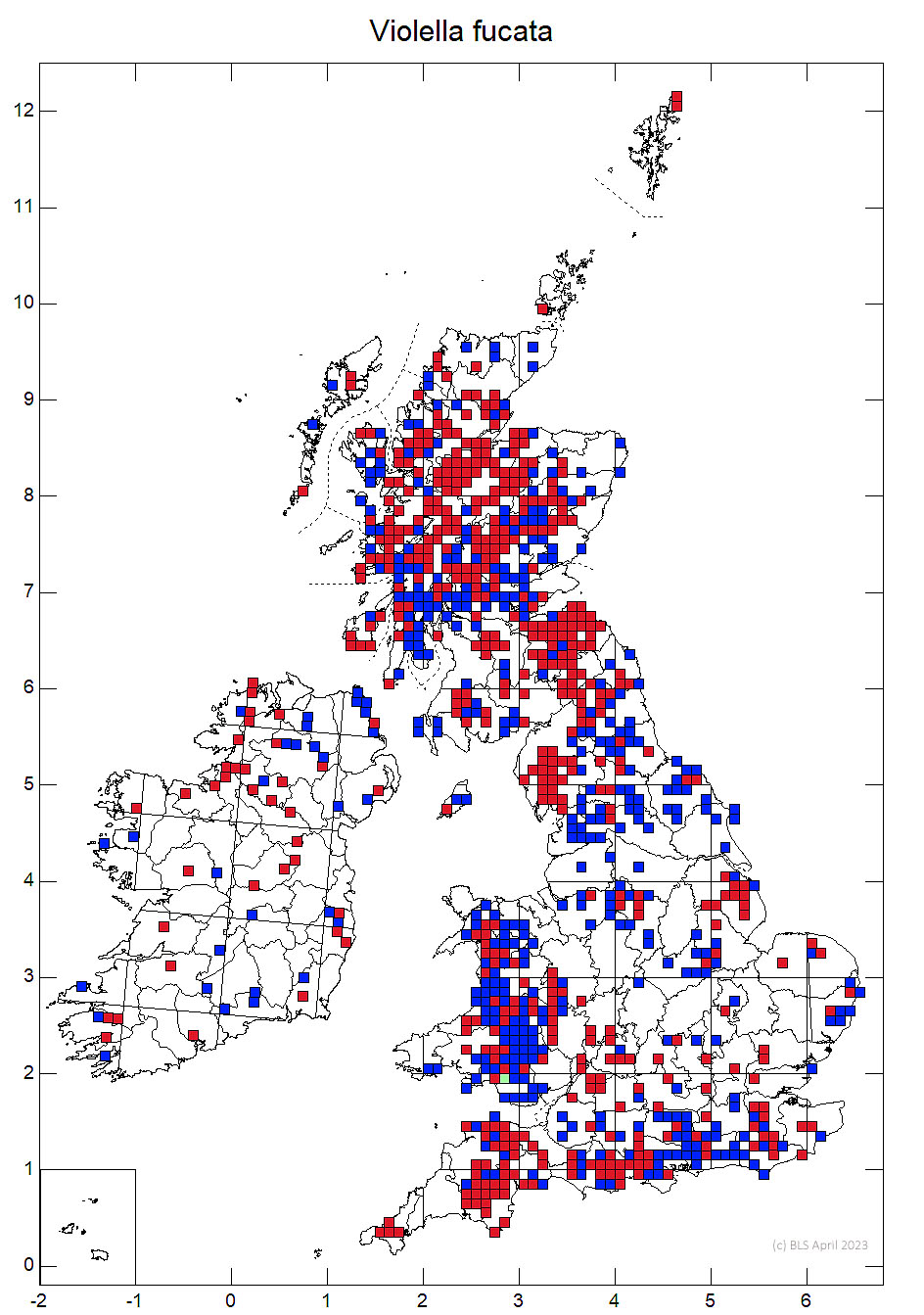A frequent, rather scruffy sorediate crust, found on acid bark and wood in both clean air areas and in polluted areas. With a pale slate or dark grey thallus of low warts which often erode and become sorediate The soredia pale yellowish green to deep blue-grey, often forming a ± continuous thick patchy granular-sorediate crust. Can be mistaken for several similar lichens, but these lack the combination of a Pd+ rust-red and K± brownish spot tests.
Thallus effuse, immarginate, pale slate or dark grey, occasionally with a bluish tinge, rather thin, partly or ± continuously faintly rimose, surface smooth or partly uneven with low spreading warts 0.1–0.3 mm diam., which often erode and become sorediate; soralia ± diffuse, sometimes well-defined, round or oval, to 1.5 mm diam., or irregular, excavate; soredia pale yellowish green to deep blue-grey, granular, often forming a ± continuous thick patchy granular-sorediate crust. Apothecia 0.5–1.5 mm diam., not common, often few, scattered, black, shiny, thin and plate-like, closely appressed, flat or slightly concave; true exciple thin, often excluded at maturity; epithecium, hymenium and upper part of hypothecium ± densely interspersed with numerous minute vivid purple-violet granules which dissolve in K to a bright aeruginose-blue, lower part of hypothecium pale violet or colourless, rarely spotted red-brown in part (intensifying in K). Asci (1-) 2- (to 3) spored. Ascospores (25–) 30–48 (–52) × 15–21 µm, ellipsoidal; wall 2.5–4 µm thick, laminar and with the inner part becoming brownish at maturity. Thallus C–, K± brownish, KC+ dull brown, Pd+ rust-red, UV– (fumarprotocetraric acid, atranorin, chloratranorin).
Fertile specimens may be ± devoid of soralia but are recognised by the large, aseptate ascospores and vivid purple colouring in the hymenium, which is K+ bright peacock-blue. Sterile specimens can resemble Buellia griseovirens, Megalaria pulverea, Mycoblastus caesius, Pertusaria pupillaris and Xylographa vitiligo, all of which also occur on wood. Mycoblastus caesius is Pd–, UV+ white, B. griseovirens is K+ yellow or yellow→red (crystals), X. vitiligo is Pd+ orange and has a ± immersed thallus. P. pupillaris, like V. fucata, contains fumarprotocetraric acid, but in the former the soralia are rather scattered, punctiform and evenly distributed. V. fucata superficially resembles Fuscidea lightfootii but differs in the Pd+ rust-red reaction of the soralia.
On smooth acid to neutral bark of young trees, or the flat surfaces of rough bark, especially Birch and Alder, as well as Ash in acidified sites, in wayside and woodland habitats, on wood and fence posts where it is most likely to be fertile, possibly also on rocks.

Locally frequent, throughout Britain and Ireland.
Cannon, P., Aptroot, A., Coppins, B., Orange, A., Sanderson, N. & Simkin, J. (2022). Lecanorales: Tephromelataceae, including the genera Calvitimela, Mycoblastus, Tephromela and Violella. Revisions of British and Irish Lichens 29: 1-10.
Text by Neil A. Sanderson based on Cannon et al (2022)

